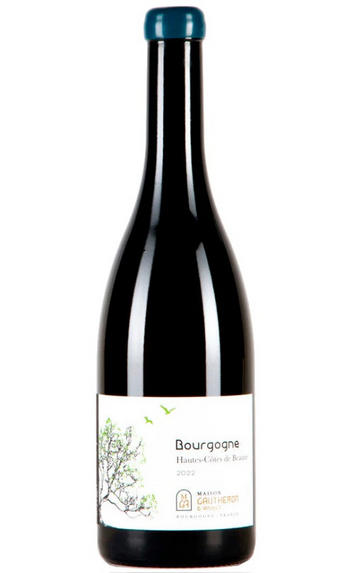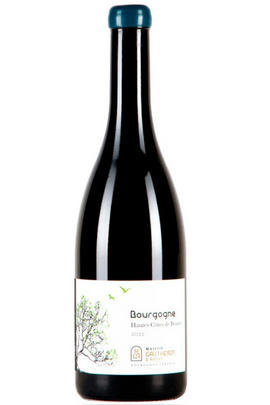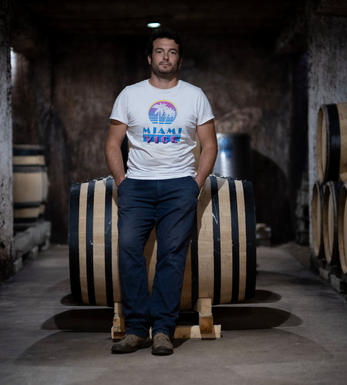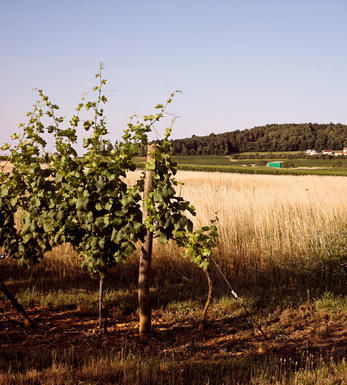
2022 Bourgogne, Hautes-Côtes de Beaune, Maison Gautheron d'Anost

About this WINE

Maison Gautheron d'Anost
Maison Gautheron d’Anost is a young and promising winery located in Meursault, Burgundy. Founded by Bastien Gautheron, the estate follows a non-interventionist approach to winemaking, emphasising the connection between terroir and vineyard.
The vineyards are primarily organic-certified, with holdings in Savigny and Hautes-Côtes de Beaune. Bastien also collaborates with other organic winegrowers to source grapes. His winemaking philosophy involves simple vinifications, short macerations, and aging in barrels.
Notable wines from Maison Gautheron d’Anost include the Bouzeron ‘Les Louères’ (Aligoté), offering velvety fruit with lemon and greengage aromas; the Saint Romain ‘Les Perriéres’ (Chardonnay), a zippy and mineral wine; and the Hautes-Côtes de Beaune (Chardonnay), a delightful balance of citrus fruit and weight.

Bourgogne Hautes-Côtes de Beaune
Hautes-Côtes de Beaune in Burgundy is located on the slopes and plateaus above the Côte de Beaune, one of the world's most renowned wine-producing areas, stretching along the hills and valleys.
The climate is characterised by its semi-continental nature, with cool winters, warm summers, and moderate rainfall. This region's terroir (the combination of soil, climate, and geography) significantly influences the character of the wines produced here.
Pinot Noir and Chardonnay are predominantly cultivated like the rest of Burgundy. These two grape varieties thrive in the region's soil and climate, producing exceptional wines with unique characteristics. Red wines made from Pinot Noir in Hautes-Côtes de Beaune often display elegant fruit flavours, delicate tannins, and a notable expression of terroir. On the other hand, white wines crafted from Chardonnay showcase crisp acidity, minerality, and a rich, floral bouquet.
While the Hautes-Côtes de Beaune might not be as famous as some of the more prestigious appellations within Burgundy, it is an exciting and promising region, producing distinct, elegant wines that reflect its unique terroir.

Chardonnay
Chardonnay is often seen as the king of white wine grapes and one of the most widely planted in the world It is suited to a wide variety of soils, though it excels in soils with a high limestone content as found in Champagne, Chablis, and the Côte D`Or.
Burgundy is Chardonnay's spiritual home and the best White Burgundies are dry, rich, honeyed wines with marvellous poise, elegance and balance. They are unquestionably the finest dry white wines in the world. Chardonnay plays a crucial role in the Champagne blend, providing structure and finesse, and is the sole grape in Blanc de Blancs.
It is quantitatively important in California and Australia, is widely planted in Chile and South Africa, and is the second most widely planted grape in New Zealand. In warm climates Chardonnay has a tendency to develop very high sugar levels during the final stages of ripening and this can occur at the expense of acidity. Late picking is a common problem and can result in blowsy and flabby wines that lack structure and definition.
Recently in the New World, we have seen a move towards more elegant, better- balanced and less oak-driven Chardonnays, and this is to be welcomed.


Buying options
Add to wishlist
Description
Bastien crafts this from a blend of his own vines in Savigny with some purchased fruit from Le Rochepot, above St Aubin. There are 11 barrels in total, three of which were new but with a very light toast. The nose is mealy and spicy with fresh citrus fruit, while the palate is juicy and succulent, finishing on a salty, iodine note.
Drink 2024 - 2030
Berry Bros. & Rudd
wine at a glance
Delivery and quality guarantee